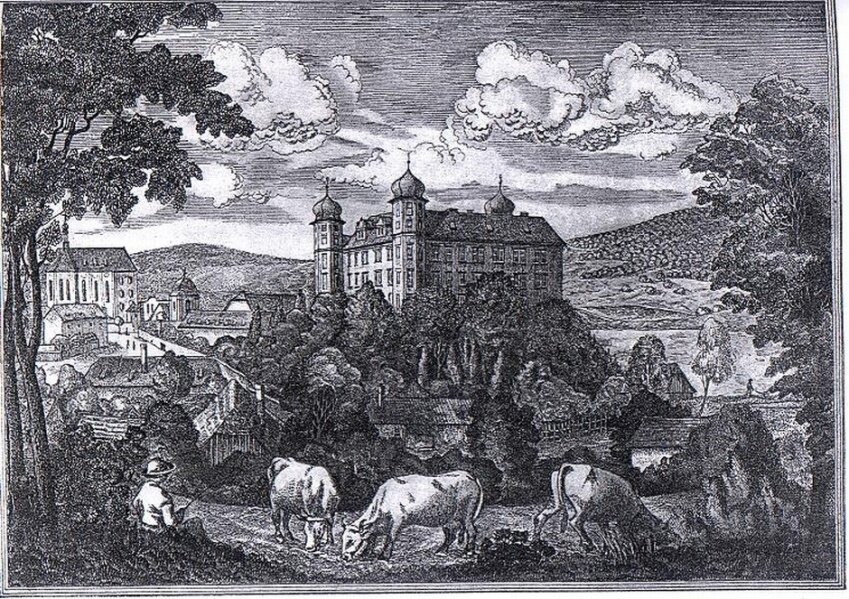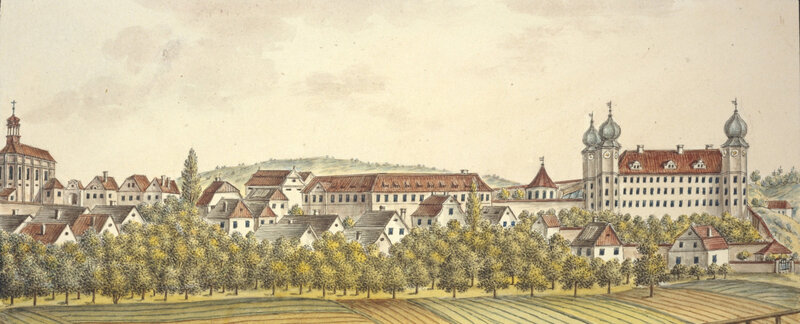Dear visitors. If you want to be sure of a place on the tour, buy tickets on line. Thank you for your understanding.
History
The history of the Chateau Mníšek pod Brdy starts in the 13th century. The current arrangement was made by Servatius Engel of Engelsfluss in the mid-17th century. The current design of the internal areas was made by the last owners of the chateau, the Kast house, in the early 20th century.

The archaeological findings from the courtyard have proven the building from the late 13th or early 14th century. Most likely it was a small castle surrounded by a rampart and a moat that separated the castle from the town.
The first written record of the Mníšek chateau is the record in Charles IV’s Majestas Carolina from 1348.
In 1487, Mníšek was acquired by the important house of Mitrowicz, which owned it for over 150 years, throughout the whole 16th century.
The oldest picture of the chateau was made in 1622, and though schematic, it probably displayed the real view to the building from the south.
In 1639, the Swedish troops, led by General Banér, plundered the chateau and burned it down, together with the courtyard.
Another important year is 1655 when the domain was bought from the Mitrowicz by the Prague burgher turned aristocrat, originally a Flemish tanner called Servatius Engel of Engelsfluss. Between 1656 and 1672, he had the chateau revamped. This finished the stage that gave the building its basic design and arrangements so far, despite frequent and significant later changes.
 In the second half of the 18th century, during the rule of the Unwerth house, a lot of building adjustments were made. After Ignatius Umwerth’s death, the property went to the Pachta house, but it was managed by land officials until 1838 due to disputes in the family. In 1848, the chateau was damaged by fire.
In the second half of the 18th century, during the rule of the Unwerth house, a lot of building adjustments were made. After Ignatius Umwerth’s death, the property went to the Pachta house, but it was managed by land officials until 1838 due to disputes in the family. In 1848, the chateau was damaged by fire.
In 1909, after the death of Earl Schirnding, the property was taken over by his relative Theodorich, lord Kast of Ebelsberg, who started major reconstruction following the project made in 1910–1911 by a renowned Prague studio led by Matěj Blecha.
In 1945, the chateau was plundered and then confiscated. The Ministry of Interior started using the chateau in 1946 as a storage area for important and politically sensitive archived documents. In 2000, the building was cleared out and given to the National Heritage Institute for major renovation.
The renovation started in December 2000, with the aim to restore the chateau to the conditions of the 1920s. Since 2008 the chateau has been accessible to public, and the visitors have a unique opportunity to see how the minor aristocrats live during the pre-war era.